ENVIRONMENTAL ADVISORY COUNCIL (EAC)
MEMBERS
LORNA YEARWOOD, CHAIRPERSON
SUE BOYD, SECRETARY
JAMES GILL
BARBARA SCATTERGOOD
MICHAEL CLIME
MEETINGS
The EAC meets at 7 pm on the second Thursday of the month at the Township Building, the public is welcome to attend.
JOIN ZOOM MEETING HERE.
UPCOMING EVENTS

"Spring Graze" by Lisa Berman
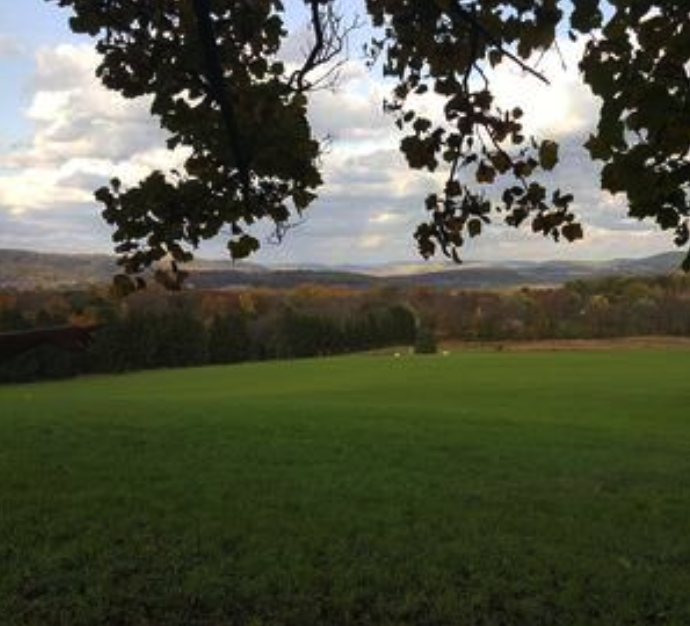
WHAT IS AN EAC?
Source: PA EAC Network Handbook
An Environmental Advisory Council is a group of 3-7 community residents, appointed by local elected officials, that advises the local planning commission, park and recreation board and elected officials on the protection, conservation, management, promotion and use of natural resources within its territorial limits. Municipalities are authorized to establish EACs through Act 177 of 1996, originally Act 148 of 1973. EACs, as part of local government, work directly with municipal officials to help them make environmentally sound decisions — and protect the health and quality of life of our communities.
What EACs Do
In accordance with Act 177, EACs are authorized to:
- Identify environmental problems and recommend plans and programs to protect and improve the quality of the environment;
- Make recommendations about the use of open land;
- Promote a community environmental program;
- Keep an index of all open space areas to determine the proper use of such areas;
- Review plans, conduct site visits, and prepare reports for municipal officials; and
- Advise local government agencies about the acquisition of property.
What Don’t EACs Do
- EACs do not regulate; they are advisory only.
- EACs do not take the place of or compete with planning commissions or park and recreation boards; they augment and work closely with them.
- EACs are not activist or extremist environmental groups — they are part of the local government and accomplish the most when they work well with local officials.
- EACs do not compete with local grass-roots organizations, such as watershed associations.
- They are contact points and local government liaisons for these groups.
- EACs do not add bureaucracy to the local government — they have an organized procedure for participating in land use decisions
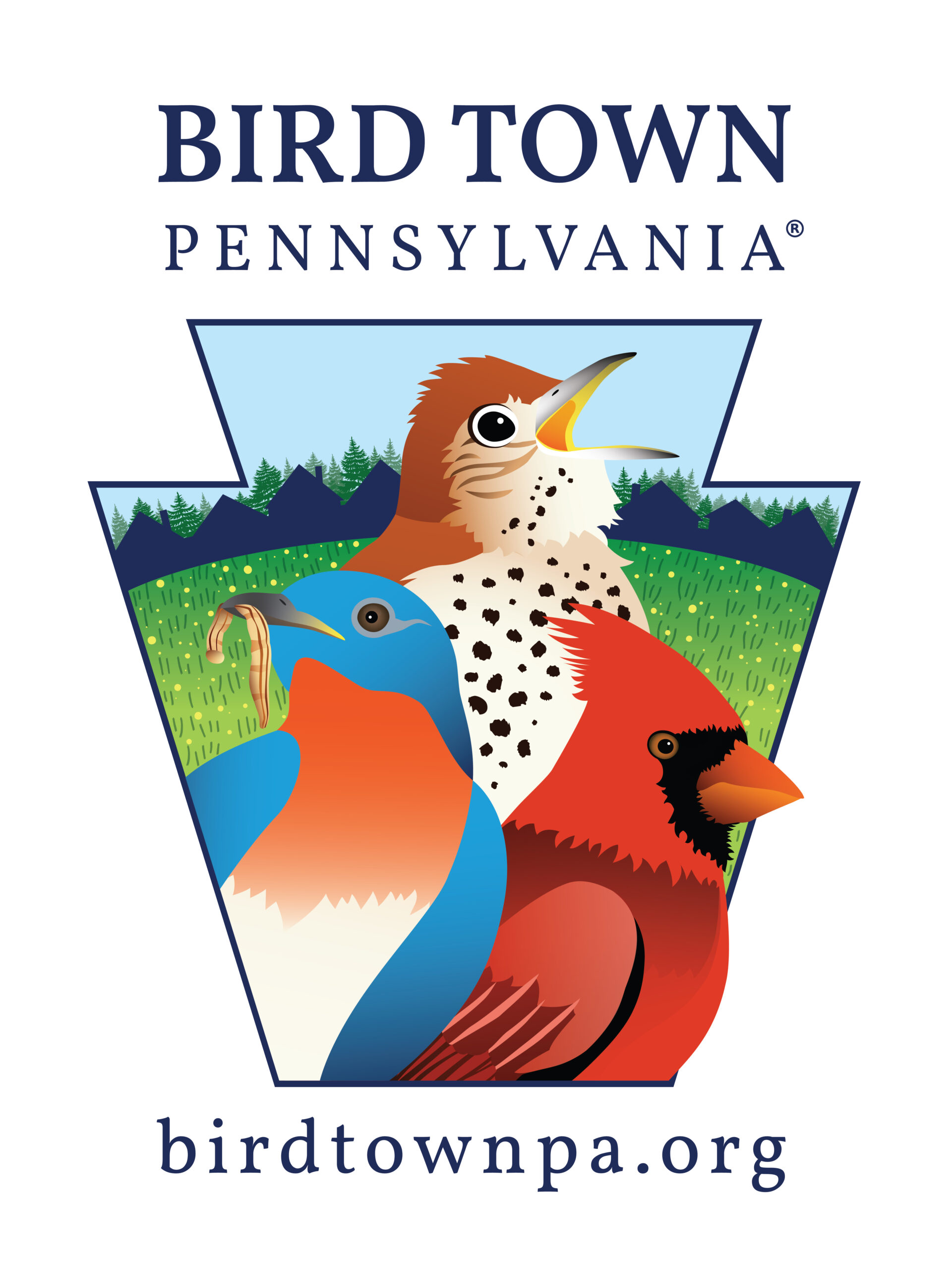
Native Gardening
Township Native Garden & Grounds
EAC members designed and installed the native garden at the Township building between the road and the flagpole by the police entrance. It is a good example of a well-designed native garden that can be used as a model for residential properties. It is maintained by EAC volunteers.
The Township owns a total of 10 acres, the EAC have a strategic plan to improve habitat on the property. We started in the Fall of 2015 in the vicinity of the Township Building by removing invasives, this will be a long term improvement project.
Designing with Natives
Adding native plants to your backyard is one of the best ways to improve habitat for birds and other wildlife. Two of our EAC members are experts on native plants and have experience in designing backyards using native plants, if you ask, they are willing to come and help with your yard!
Email [email protected] if you are interested in this free service.
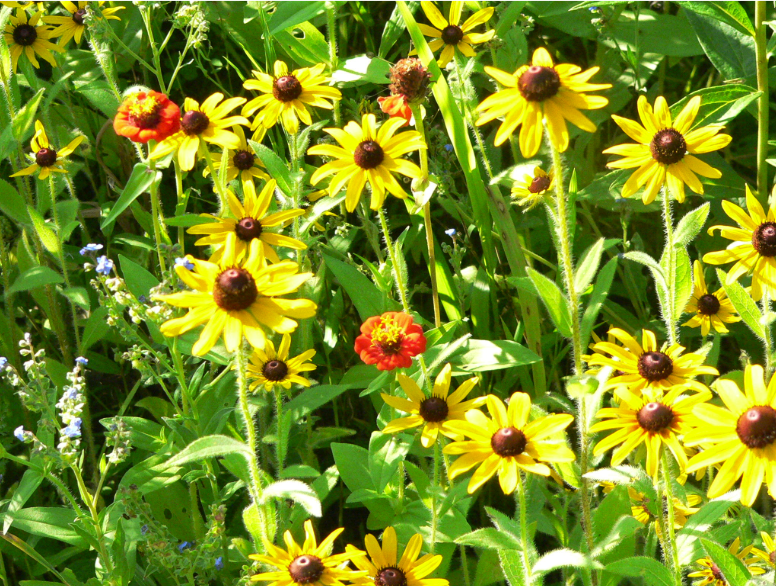
FOUR REASONS TO PLANT NATIVE
- Reduced Maintenance
Compared with turf and the mulched tree, shrub and perennial plantings commonly found in today’s residential and commercial landscapes, landscapes planted with appropriate native plants require less maintenance. They require minimal watering (except during establishment and drought periods) and they can be maintained without the use of synthetic chemical fertilizers, pesticides, and herbicides. It is important to remember that reduced maintenance does not mean NO maintenance. A maintenance and management plan is still necessary even for native landscapes.
Source: Missouri Botanical Garden Native Landscaping Manual, Chapter Four: Landscaping with Native Plants
- To Provide Wildlife Habitat
A landscape consisting of a diversity of native trees, shrubs, perennials and grasses provides food and shelter for wildlife throughout the year.
- For Visual Appeal
Native perennials, flowering vines, shrubs and trees can create aesthetically appealing landscapes. A well designed native landscape provides visual interest year round.
- Educational Opportunities
Native landscapes provide opportunities for learning about seasonal cycles, wildlife, and plant life cycles. A native landscape can provide an ideal setting for environmental, conservation, and biological science education.
For native plants and further information:
Archewild
www.archewild.com
2191 Hillcrest Rd, Quakertown, PA 18951
(Call ahead – not regular retail hours)
855-752-6862
Edge of the Woods Nursery
www.edgeofthewoodsnursery.com
2415 Route 100, Orefield, PA 18069
610-395-2570
Northeast Native Perennials
www.nenativesandperennials.com
1716 East Saw Mill Road, Quakertown, PA 18951
(Check directions on website – GPS not accurate)
215-901-5552
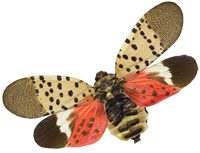
Image credit: Nick Sloff, Penn State College of Agricultural Sciences
Invasive Insects & Plants
Invasive insects and plants are those that are not native to our area, they are brought to the area either deliberately, for example for use in our landscaping like the butterfly bush, or by accident like for example the brown marmorated stink bug which entered the country in packaging and actually was first identified in Allentown PA in 1998.
Not all non-native plants are invasive, only those that outcompete the local native plants. There are a large number in our area, see this website for more information.
Currently, there are two high priority invasive insects currently in our region — the Emerald Ash Borer and the Spotted Lanternfly, click on the words for more info. (Hard copies of fact sheets are available in the Township building)
Tire Recycling
Springfield EAC holds an annual Tire Recycling event. This has been very successful and it raises funds for the EAC to further other programs. It is normally held on a weekend in October — see website Calendar and Facebook for further details.
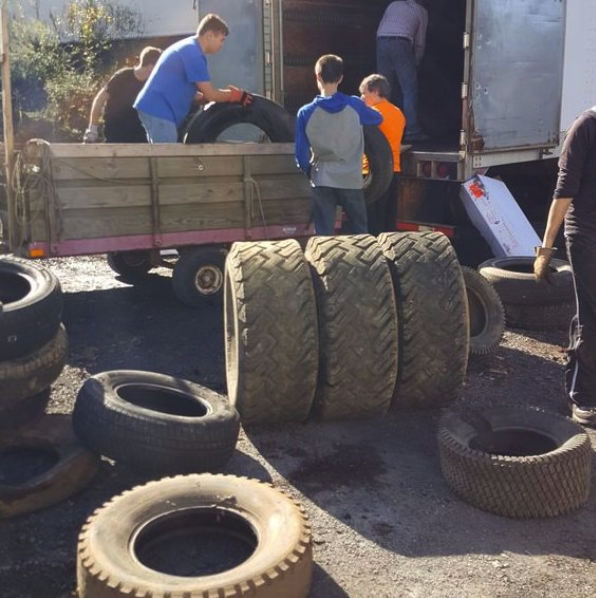
Roadside Cleanup
Springfield EAC have adopted a section of 412 between the 412/212 intersection and Old Bethlehem Road. Since 2005, the EAC has been collecting roadside trash — since 2014, we have recycled the majority of the materials collected. In 2015, the EAC received recognition from PennDot for 10 years of service. The cleanups are held in early April (as part of the Cooks Creek Watershed Clean up) and in mid-November.
Pipelines & Natural Gas Fracking
In 2015, the EAC was successful in having the Township’s Board of Supervisors adopt a resolution against pipelines in our Township. Although the Penn East Pipeline, which is proposed to transport fracked gas from upstate Pennsylvania to New Jersey and beyond, is not currently proposed to come through Springfield Township, this resolution supports our neighboring communities and also sets out our objections to any other future pipeline proposals.
In January 2018, the Board of Supervisors adopted a Resolution (2018-2) to call upon the Delaware River Basin Commission to ban hydraulic fracturing (fracking) in the Delaware River Basin.
Map showing proposed routes of the Penn East pipeline
Clean Air Council:
Wild & Scenic River Designation
On November 1st, 2000, 67 miles of the Lower Delaware River along the border of eastern Pennsylvania and western New Jersey, and three Pennsylvania tributaries received Federal Wild and Scenic Designation. The Wild and Scenic Rivers Act was passed by Congress in 1968 with the goal of protecting the freeflowing condition of rivers. Each designated river is to be managed in a way that protects and enhance the values that prompted its designation.
The oversight of the Wild and Scenic sections of the Delaware River is a cooperative effort between the National Park Service, the Delaware River Greenway Partnership, and the Lower Delaware Management Council.
On May 24th, 2016, Springfield Township Board of Supervisors unanimously passed a resolution in support of joining the Wild and Scenic Rivers designation. However, since Cooks Creek flows from Springfield Township through Durham Township to the Delaware, Springfield Township can only be incorporated into the designation if a resolution is also passed in Durham Township. Citizen organizers in both Pennsylvania and New Jersey have been working together to advocate for this designation and to pass resolutions in their respective communities. More information on the Wild and Scenic Rivers designation process can be found Delaware River Basin Commission’s website and lowerdelawarewildandscenic.org.
